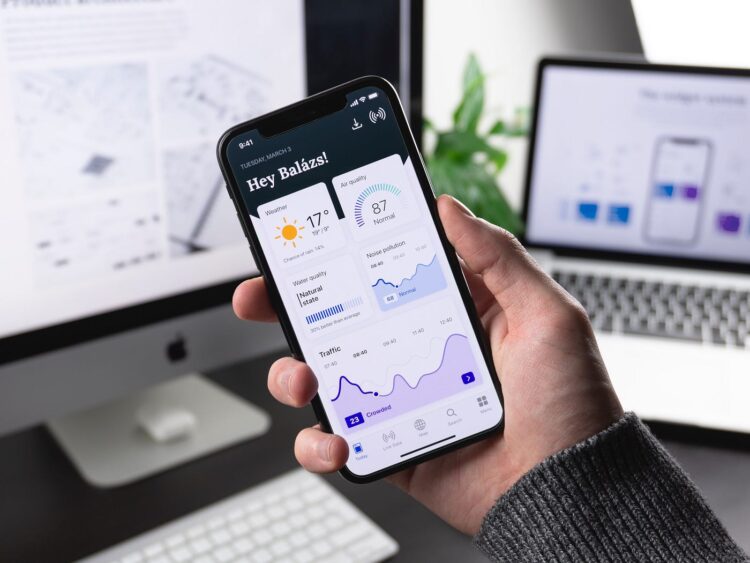2015 marked a turning point for the world of web design with Google’s introduction of the “Mobile-Friendly Update.” Google would now prioritize mobile-friendly websites in their search rankings, thus solidifying responsive web design (RWD) as a critical element for online success.
Since then, RWD has become a cornerstone of good web design practice and a necessity for online success. However, things were not always like this, and websites were not always responsive.
Let us learn about the historical evolution of responsive web design services, exploring the trends and innovations that have shaped this essential, but relatively new field in the world of web design. But first, let us revisit the core principles of RWD to better understand its origins, its impact, and its enduring relevance.
Page Contents
What is Responsive Web Design?
RWD is a web design approach focused on creating websites that deliver optimal user experiences across various devices/screen sizes. Websites designed with this approach can automatically adapt their layout, content, and design elements to the device being used (desktop, tablet, mobile, etc.). This translates to seamless navigation without the need for excessive zooming, scrolling, or panning, no matter what device is being used.
RWD helps companies deliver unified website experiences that are accessible on all devices. This approach prioritizes user convenience and significantly reduces bounce rates, something that often plagues rigid, non-responsive websites. It also eliminates the need for creating separate desktop or mobile-only websites.
Where Did RWD Begin?
In the early days of the web, the concept of ‘responsive’ design was a non-issue. Website designs adhered to static, one-size-fits-all templates. Design considerations like layout, typography, and user experience across various screen sizes were largely absent from the design/development processes.
Even with the broader adoption of CSS (Cascading-Style-Sheets), adapting content for different screen sizes was not a concern for most product teams.
However, some rudimentary techniques started to emerge in the late 90s. These techniques were focused on creating websites that could adapt automatically to PC monitors and browsers of varying dimensions.
Fixed-Width Layouts
This initial approach defined a fixed pixel width for the website’s layout. Websites with fixed-width layouts looked the same across most desktop monitors at the time. However, if a user’s screen resolution differed from the intended design, fixed-width layouts would not load properly.
Liquid Layouts
Pioneered by Glenn Davis, this technique took websites beyond the limitations of fixed-width layouts. It employed relative units (percentages) not fixed pixel sizes, to define element widths. This allowed for the website elements to scale proportionally to the available screen space and offer super-flexible responses to varying screen sizes.
This was a major step towards responsive design, but it was not perfect. Content overflow and text wrapping issues plagued liquid layout sites whenever they were used on smaller screens.
Resolution-Dependent Layouts
A significant advancement came in 2004 with the introduction of resolution-dependent layouts. Pioneered by Cameron Adams (through a famous blog), this technique leveraged JavaScript to dynamically swap out stylesheets based on the users’ browser window sizes.
This approach offered developers a more granular level of control over the website’s appearance at different screen resolutions. Resolution-dependent layouts served as an early version of CSS media queries, a fundamental tool in modern RWD.
The Rise of Mobile Devices

Source: medium.com
The introduction of resolution-dependent layouts coincided with the surge of internet-enabled mobile phones. Companies developed many new browsers for smartphones, presenting new challenges for web designers. Their solution? Burdening developers and designers with managing/maintaining two distinct versions of the same website.
This cumbersome approach persisted until 2010 when Ethan Marcotte’s article introduced the term “Responsive Web Design.” This concept, Inspired by John Allsopp’s exploration of web design’s architectural principles, paved the way for all-in-one websites that could seamlessly adapt to any device.
While the iPad debuted in 2010, RWD did not gain widespread traction until 2013. During this period, “adaptive websites” with separate mobile URLs were still the norm. Responsiveness steadily grew in popularity, but Google’s announcement in 2015 marked a major industry shift.
The Age of Responsive
Ethan Marcotte’s seminal article laid the foundation for RWD by introducing three critical components:
- Fluid grids ─ Fluid grids introduced the concept of fluid column structures within a website’s layout. These columns can expand/contract based on the screen size, ensuring optimal content loading across all devices.
- Flexible images ─ This concept emphasizes that images, just like the website’s layout and content, should adapt to the fluidity of the grid system. So, images were placed inside flexible image containers that would resize automatically based on the screen size. This ensured that the images did not overflow or load improperly.
- Media queries ─ Media queries are code instructions written in CSS (Cascading Style Sheets, the language that controls a website’s appearance) that ask the question “What device is this site being loaded on?” every time a responsive site is launched. Based on the answers to the media query’s questions (screen size, device type, etc.), the site’s layout and style adapt automatically.

Source: 12grids.com
With these basic principles, RWD has excelled at delivering optimal user experiences to billions of smartphone and PC users worldwide. However, there is still a lot of scope for improvement:
- RWD requires us to deliver content in a flexible, prioritized, and adaptive manner. As mobile browsing grows, lengthy content blocks are becoming less practical. Designers must find more effective ways to share long-format content in short, easily absorbable snippets.
- Third-party content like videos, social media feeds, and interactive maps often rely on i-frames, which can be problematic in RWD due to their fixed-sizing requirements.
- Modern, high-density phone screens demand sharper images. Designers currently use progressive JPEGs which offer some improvement, but a standardized solution for responsive image delivery is very much needed in the industry.
- Responsive sites with complex navigation menus require more creative solutions. A universal standard for responsive menu icons would also be a welcome addition to the field.
Responsive web design is a rapidly evolving field. Hopefully, new solutions will continue to emerge, paving the way for more seamless user experiences across all devices.





